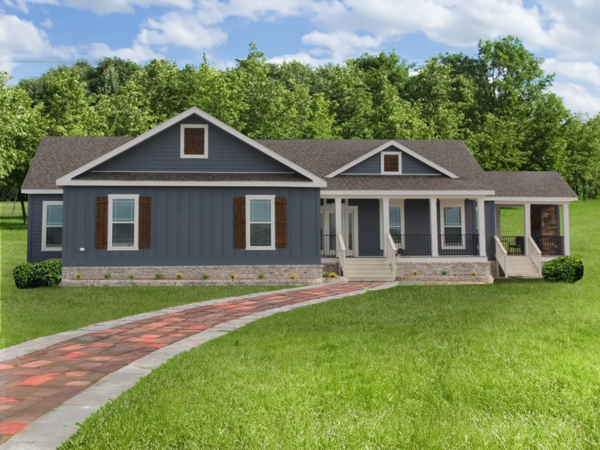Sustainable Modular Homes: A Smarter Way to Live Green
Sustainable modular homes are quickly becoming a leading choice for eco-conscious homeowners seeking efficient, affordable, and green living solutions. These sustainable modular homes combine eco-friendly construction with modern design, offering a smarter, more responsible way to build and live in today’s world.
Sustainable modular homes are quickly becoming a leading choice for eco-conscious homeowners seeking efficient, affordable, and green living solutions. These sustainable modular homes combine eco-friendly construction with modern design, offering a smarter, more responsible way to build and live in today’s world.

What Are Sustainable Modular Homes?
Sustainable modular homes are prefabricated houses built with environmental responsibility in mind. Constructed in sections at a factory and assembled on-site, this building method drastically reduces material waste and energy use. These homes prioritize low-impact materials and energy-efficient systems, helping reduce your carbon footprint without sacrificing comfort or style.
Unlike traditional homes, sustainable modular homes are designed with green building practices from the start—making them not only fast to construct but also durable and adaptable to diverse climates and settings.
Key Features of Sustainable Modular Homes
• Eco-Conscious Materials: Use of reclaimed wood, recycled steel, and low-VOC finishes for healthier, greener living.
• Energy Efficiency: Equipped with solar panels, advanced insulation, and energy-saving appliances to minimize utility use.
• Water-Saving Systems: Features like greywater reuse, rainwater collection, and low-flow fixtures.
• Smart Technology: Integrated systems that control lighting, heating, and security for convenience and reduced waste.
• Space Optimization: Modular designs make the most of every square foot with flexible layouts and expandable options.
Why Choose a Sustainable Modular Home?
• Affordable Green Living: Modular construction reduces labor costs and waste, lowering the total cost of building.
• Quick Turnaround: Homes are assembled faster than traditional builds, meaning less time between planning and moving in.
• Customizable Designs: Homeowners can choose finishes, layouts, and features tailored to their needs and aesthetics.
• Lower Environmental Impact: These homes use fewer resources and produce less waste throughout their lifecycle.
Urban Benefits of Sustainable Modular Housing
As cities grapple with overpopulation and climate challenges, sustainable modular homes offer an elegant solution. Their compact, stackable design is ideal for dense urban spaces, reducing the need for sprawl. Plus, their energy-efficient features help ease the strain on municipal infrastructure while improving residents’ quality of life.
Challenges to Consider
• High Initial Costs: While more affordable in the long run, the upfront price tag can be daunting.
• Zoning Restrictions: Some areas have outdated codes that can complicate modular home placement.
• Limited Supply Chain: Depending on location, finding skilled modular builders or eco-materials may pose a challenge.
Still, these challenges are being addressed by innovative companies like Plant Prefab and Module Housing, who are working to make sustainable modular homes more accessible and compliant with local laws.
The Road Ahead for Sustainable Modular Homes
With growing global focus on climate action and efficient urban planning, sustainable modular homes are gaining attention as a viable, scalable housing model. Advances in green materials, automation, and off-grid capabilities will continue to drive this movement forward.
More governments are also incentivizing sustainable development, which could lead to wider adoption and improved affordability of modular green homes in the coming years.
In Summary
Sustainable modular homes offer a transformative approach to green living—combining speed, affordability, and environmental responsibility. They meet the needs of today’s homeowners while protecting resources for future generations, making them a cornerstone of the sustainable living revolution.